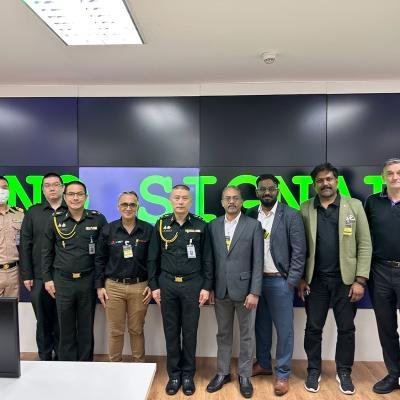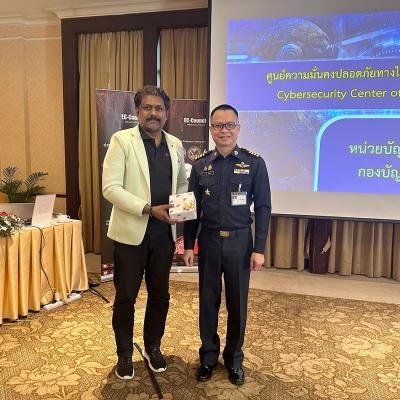The cyber threat landscape is constantly evolving, and as technology continues to advance, so do the tactics used by cybercriminals. The term refers to the overall picture of the cybersecurity risks and vulnerabilities that exist in the digital world, including the types of attacks and the potential impact on organizations and individuals. The cyber threat landscape is complex and multifaceted, with attackers using a wide range of tactics, techniques, and tools to gain unauthorized access to systems, steal data, or disrupt services. Understanding the evolving cyber threat landscape is crucial for individuals, organizations, and governments to protect themselves from cyber threats and ensure a secure and trustworthy digital environment.
Background
The cyber threat landscape refers to the evolving and ever-changing environment of potential cybersecurity risks that individuals and organizations face. The landscape is constantly shifting as cybercriminals develop new techniques and exploit vulnerabilities in technology, software, and systems to gain unauthorized access to sensitive information, steal identities, or cause other types of harm.The emergence of the internet and the widespread adoption of digital technology has transformed the way we live, work, and communicate. This transformation has also created new opportunities for cybercriminals to exploit vulnerabilities in technology and systems to gain unauthorized access to sensitive data, cause disruptions, and engage in other malicious activities.The cyber threat landscape is vast and varied, encompassing a wide range of threats and attack vectors, including phishing attacks, malware, ransomware, social engineering attacks, advanced persistent threats (APTs), and many others. Threat actors can range from individual hackers and cybercriminal organizations to nation-states and terrorist groups.Cybersecurity professionals and organizations must continually monitor the threat landscape and adapt their security measures to keep pace with new and emerging threats. This requires a deep understanding of the evolving tactics, techniques, and procedures used by cybercriminals and the ability to anticipate and mitigate potential risks before they can be exploited.
Key Points
-
Rapidly Evolving: The cyber threat landscape is constantly evolving and adapting to new technologies and security measures. As technology advances, so do the methods of cybercriminals.
-
Diverse Threat Actors: The threat landscape is diverse, including a wide range of actors such as nation-states, organized crime groups, hacktivists, and insiders. These actors have different motives, tools, and techniques to launch cyberattacks.
-
Cyberattacks: The number and complexity of cyberattacks are increasing rapidly. Cybercriminals are using sophisticated techniques such as social engineering, ransomware, malware, and phishing to gain access to sensitive data and networks.
-
Attack Surfaces: The attack surfaces are expanding with the adoption of new technologies such as the Internet of Things (IoT), cloud computing, and artificial intelligence (AI). These technologies offer new opportunities for cybercriminals to launch attacks.
-
Insider Threats: Insider threats continue to be a significant concern for organizations. Insiders can cause damage to the organization intentionally or accidentally through human error.
-
Third-Party Risk: Third-party risk is also a growing concern for organizations as they rely on vendors, suppliers, and contractors to provide services and products. Third-party breaches can cause significant damage to organizations.
-
Regulatory and Compliance Requirements: Regulatory and compliance requirements are becoming more stringent, and organizations must comply with various standards and regulations such as GDPR, CCPA, and HIPAA to avoid penalties and reputational damage.
-
Cybersecurity Skills Gap: The cybersecurity skills gap is a significant challenge for organizations as they struggle to find skilled cybersecurity professionals to protect their networks and data.
-
Zero-Trust Security: Zero-trust security is gaining popularity as organizations adopt a more proactive approach to cybersecurity. This approach involves assuming that all network traffic is potentially malicious and requires authentication and authorization.
-
Machine Learning and AI: Machine learning and AI are being used by organizations to detect and prevent cyberattacks. These technologies can analyze large amounts of data and identify anomalies and patterns that indicate potential threats.
Examples and Evidence
-
Ransomware attacks: Ransomware is a type of malware that encrypts an organization's files and demands payment in exchange for the decryption key. These attacks have become increasingly common in recent years, with several high-profile attacks targeting critical infrastructure, healthcare systems, and other industries. For example, in May 2021, the Colonial Pipeline, a major US fuel pipeline operator, was hit by a ransomware attack that disrupted fuel supplies across the East Coast for several days.
-
Phishing attacks: Phishing attacks are a form of social engineering that involves tricking individuals into revealing sensitive information such as login credentials, credit card numbers, or other personal data. These attacks can be carried out through fraudulent emails, social media posts, or other online channels. According to the Anti-Phishing Working Group, there were over 222,000 unique phishing websites reported in the first quarter of 2021 alone.
-
Advanced Persistent Threats (APTs): APTs are long-term targeted attacks that are designed to gain unauthorized access to an organization's network and steal sensitive data or intellectual property. These attacks are typically carried out by well-funded and highly skilled threat actors, such as nation-states or organized crime groups. One notable example is the 2017 Equifax breach, in which hackers gained access to the credit reporting agency's systems and stole personal information belonging to millions of individuals.
-
Insider threats: Insider threats are threats that originate from within an organization, either from employees or contractors with authorized access to sensitive data. These threats can take many forms, including data theft, sabotage, or other malicious activities. According to a study by the Ponemon Institute, insider threats were responsible for 34% of data breaches in 2020.
-
Internet of Things (IoT) attacks: IoT devices are increasingly being used in both homes and businesses, but these devices often lack basic security features and are therefore vulnerable to cyber attacks. In 2016, a massive botnet known as Mirai was able to infect and control over 600,000 IoT devices, which were then used to launch distributed denial-of-service (DDoS) attacks against a variety of targets.
Conclusion
In conclusion, the cyber threat landscape is constantly evolving and becoming more sophisticated, making it more challenging for organizations to protect themselves from attacks. With the increasing adoption of digital technologies and the rise of remote work, the risk of cyber threats is higher than ever before. It is critical for organizations to be proactive in their approach to cybersecurity by implementing the latest security measures and keeping their systems up-to-date. This includes regular employee training, conducting vulnerability assessments, and investing in advanced security solutions. It is also important for organizations to have an incident response plan in place to minimize the impact of any cyber attacks. With the right approach, organizations can stay ahead of the constantly changing cyber threat landscape and protect themselves from potential cyber attacks.







